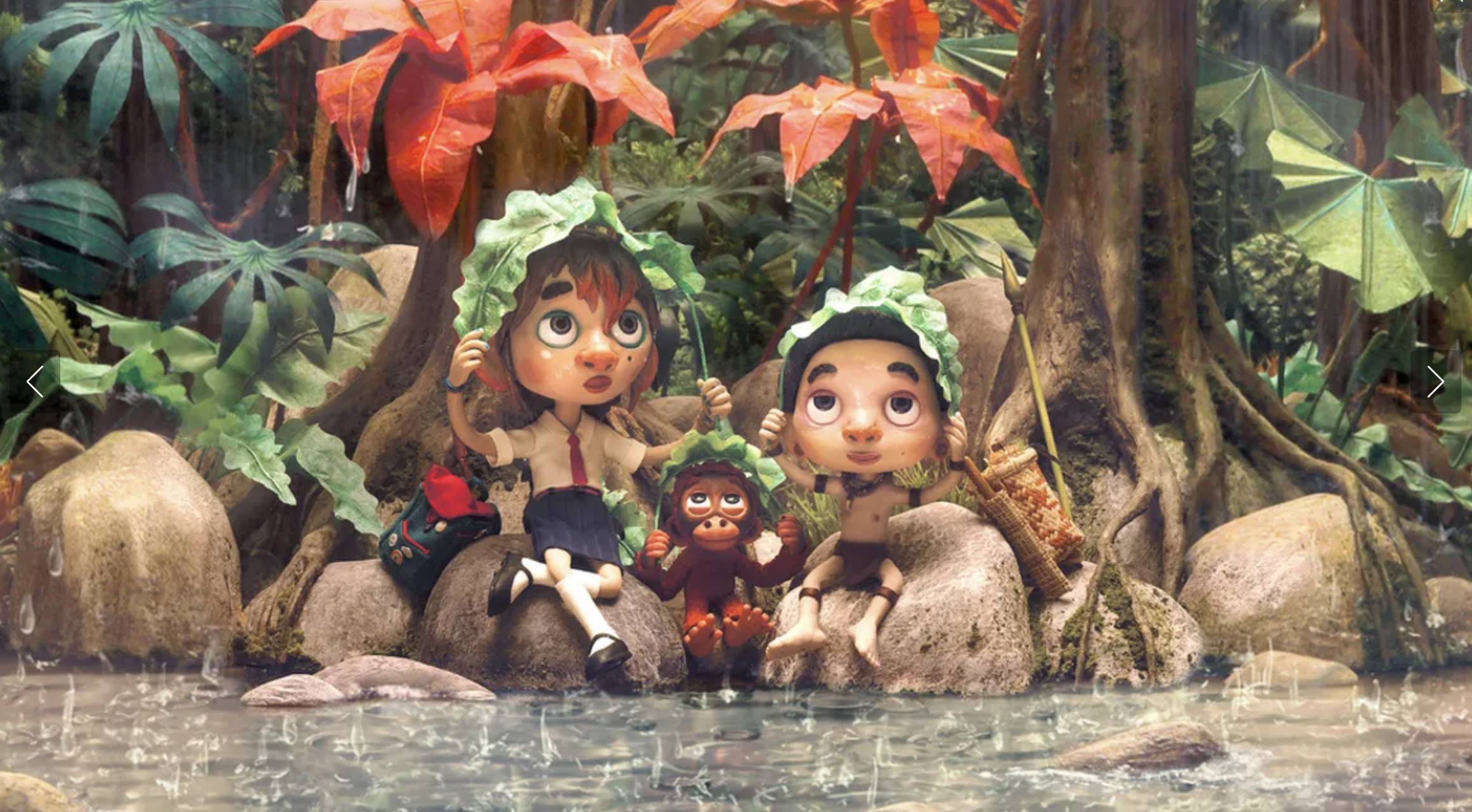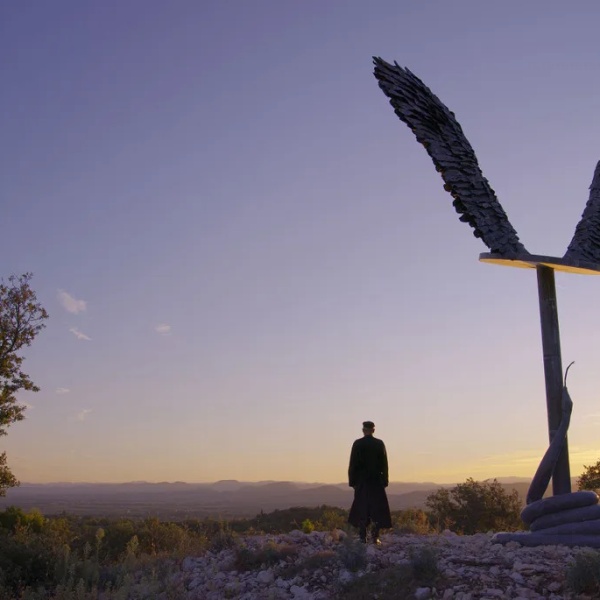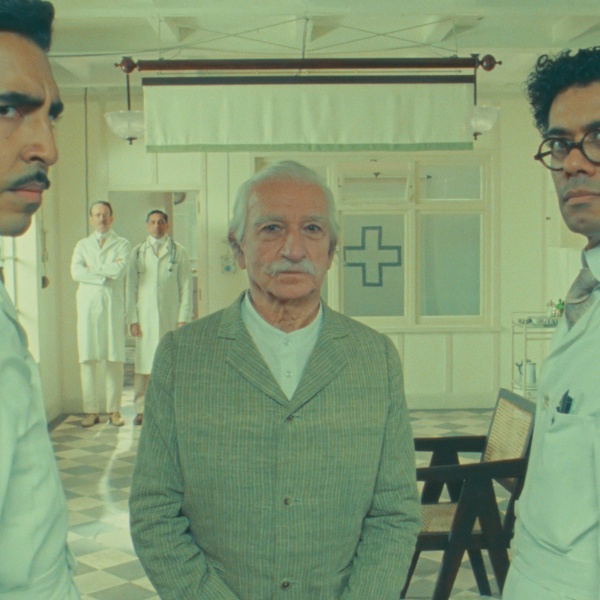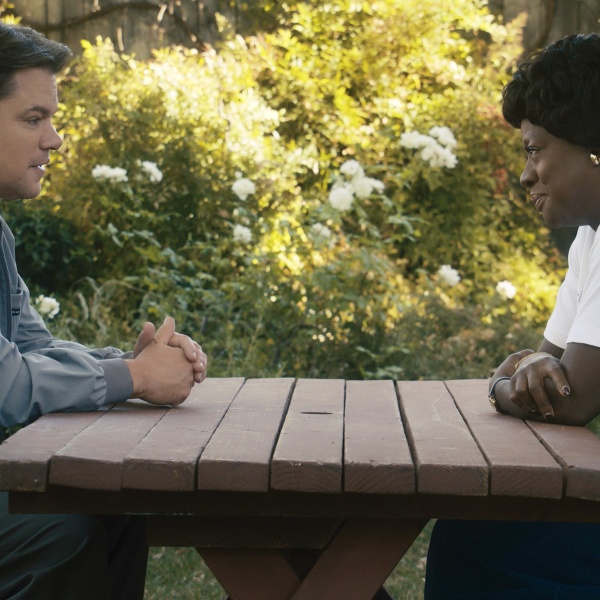
The best part of “Savages” is its opening scene, which says less about the overall quality of Claude Barras‘ sophomore feature and more about the strength of the vignette that establishes the stop-motion movie’s world. Against atmospheric music, the quote “The world does not belong to us. We borrow it from our children” flashes on screen, followed by images of a lushly rendered clay forest, brimming with life and energy. An adorable baby orangutan is briefly threatened by a small but deadly snake, before being rescued and cared for by his protective mother. Atop a tree, the mother gently breastfeeds her young son, in an idyllic image that is quickly disrupted by the sound of chainsaws, and abruptly, the tree falls to the ground, revealing a construction site filled with lumber and a factory spewing pollution into the air. The title “Savages” comes on screen against this image, and it’s clear that it isn’t the animals the film is referring to.
Whenever the title crops up in dialogue from then on, it’s used by the humans responsible for this deforestation: French workers razing the forest to establish an oil palm plantation on the Indonesian island Borneo. The target of their derision is a tribe of nomadic people residing in the rainforest, known as the Penan, who seek to prevent the mowing down of their ancestral home. The representatives of the company treat the Penan, who always protest peacefully against the encroachment of their home, with undisguised disdain, frequently ordering enforcers to brandish guns on the nomads even as they call them uncivilized and dangerous. It’s an irony that Barras’ fiery film doesn’t need to acknowledge for it to be readily obvious to the viewer, but it makes the film’s full-throttled attack on colonialism and unchecked capitalism all the more stirring.
Barras’ first film, 2016’s “My Life as a Courgette,” was a charming but frequently devastating drama he co-wrote with Céline Sciamma about a child learning to move on and heal from the traumatic death of his mother. “Savages” explores the conflict between the Penan and the companies threatening their home by distilling the action around a similar character arc, showing the forest through the eyes of someone between both worlds. At first glance a typical phone-obsessed schoolgirl, Kéria (Babette De Coster) is the daughter of a fruit picker for the plantation company, not exactly rich but comfortable enough to attend a Christian school in a town near the forest (the film succinctly conveys the economic realities of her world through an establishing shot that contrasts her small wooden home with metallic skyscrapers just across a river). She’s kind enough to adopt and save the baby orangutan from the film’s opening when his mother is killed, but initially treats the ape — who she christens Oshi — as more of a cute doll she can use to gain clout with her snooty friends than a living creature.
But Kéria’s late mother, whose death her father proves hesitant to discuss, was a member of the Penan, and when the film opens, her younger cousin Selaï (Martin Verset) comes to stay at her home both to get away from the approaching territory battle and to attend school for the first time. Kéria, both fascinated by and insecure about her heritage, initially treats Selaï with disdain and gleefully joins in on bullying he experiences at school. Still, she cares for him deep down, and when Selaï flees for the forest with Oshi in toe, she’s forced to face her fears by venturing into the wilderness to find them.

The vast majority of the film takes place in the rainforest, and it’s lovingly rendered by immaculate stop-motion animation (Antony Elworthy is credited as the chief animator). The tactile, carefully crafted miniatures and some inspired use of lighting make the environments both genuinely scary (a scene set at night lit by glowing mushrooms is a particular highlight) and stunningly beautiful. The film particularly excels in rendering the animals of the forest; from the adorable Oshi to a menacing panther to a disgusting leech, they’re all rendered with detail that makes them feel like real, living beings. If the animals clash somewhat with the human designs — which veer towards big eyes and more exaggerated features — the contrast works in how it expresses a distance between the animal and human world that the Penan seeks to bridge.
As Kéria ventures through the forest and meets Selaï’s tribe, she learns more about her background and grows more attached to the wilderness, eventually joining the Penan in their quest to drive out the corporations who seek to raze it. Her father, although a supporter of the tribe, opposes her involvement, attempting to drag her back home for her own safety. Barras’ script (which he co-wrote with Nancy Huston, Catherine Paille, and Morgan Navarro) makes engrossing drama out of the brisk storyline (the film flies by in 88 minutes) by grounding it in Kéria’s point of view. She’s a compelling protagonist, with a realistically bratty teenage perspective but a of gold that slowly and believably shines more and more as she warms up to Selaï and slowly understands the importance of sacrificing her own wants for other’s benefit. The full story of her mom’s death, which is slowly unearthed through the film, is gutting mainly due to how realistic it is, and how well the script draws the rift it creates between her and her father.
Occasionally, “Savages” may remind the audience of other environmentalist animated movies like “The Lorax,” but unlike that Seuss adaptation, the film never comes across as overly simplified or preachy. That’s mainly because of how immediate and real the conflict feels, the environmentalist threat not an abstract fantasy but the real encroaching arm of colonialism and corporate greed. Barras, who traveled to Borneo to meet with actual Penan before making the film, renders their culture much more carefully and respectfully than other animated films have tackled indigenous groups (see Disney’s “Pocahontas” for an example of how these portrayals can lean more exoticized), including dialogue from their real language that goes unsubtitled due to Kéria’s inability to understand. And the film is unwavering in how it advocates for the need to protect these nomad’s home, both through collective action and direct fighting against the forces that threaten it. Despite how fantastical the jungles of “Savages” may look, it’s a film that’s very much rooted in real life, and is all the more powerful for it.
Grade: B+
“Savages” premiered at the 2024 Cannes Film Festival. It is currently seeking U.S. distribution.





